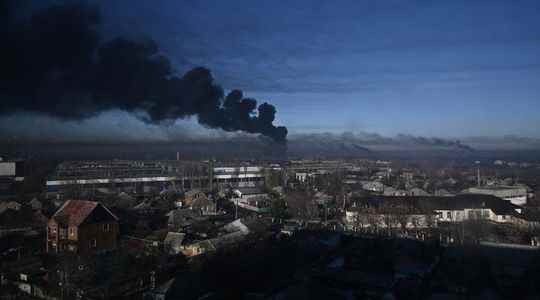Russian bombs continue to rain down on Ukraine, claiming more victims every day. The macabre count was further increased this Friday, March 4 in Cherniguiv, in the North, where according to a latest report, 47 people were killed in a strike that occurred the day before on two schools and homes, against 33 victims initially mentioned. In the hope of putting an end to the bombardments, Volodymyr Zelensky reiterated on Thursday his call to “close the skies” over Ukraine, through the establishment by NATO of a no-fly zone over the whole territory. The objective: to prevent the Russian air force from exercising all its firepower, by prohibiting its aircraft from flying over the country.
Beyond the Ukrainian president, the idea has also begun to germinate among several elected officials in the United States and the United Kingdom in recent days. “Now is a good time to renew my call for a no-fly zone, at the invitation of the Ukrainian government. I fear that if this continues, we will have to intervene in a more significant way,” said Thursday on Twitter Illinois Rep. Adam Kinzinger. Three days earlier, Mississippi Senator Roger Wicker had made the same request, as had Conservative MPs Tobias Ellwood and David Davis across the Channel.
Refusal from Western chancelleries
Despite these increasingly pressing appeals, the request has so far not met with the hoped-for echo in Western chancelleries. “It would potentially put us in a situation of military conflict with Russia. It’s not something the president wants to do,” White House spokeswoman Jen Psaki warned on Monday. Same embarrassed speech the next day in the mouth of British Prime Minister Boris Johnson, summoned, at a press conference, to explain himself by a Ukrainian association in tears.
“Imposing a no-fly zone on Ukrainian territory would involve shooting down Russian planes flying over it, points out General Dominique Trinquand, military expert and former head of the French mission to the UN. This would de facto lead to direct clashes between NATO and Russia and would inevitably lead to an escalation of the conflict.”
All NATO members have similarly opposed a clear refusal of this possibility, during an emergency meeting of Alliance foreign ministers in Brussels on Friday. “We could end up with an all-out war in Europe,” detailed the secretary general of the organization Jens Stoltenberg.
At the Elysée, we also point to the lack of effectiveness of the measure. “The no-fly zone is a very legitimate request from the Ukrainians, but also very difficult to satisfy, slips a senior French diplomat. This would require considerable resources and would not prevent the war on the ground.”
Nuclear escalation?
This measure, however, has already been implemented several times in the past. The United States and its coalition partners had thus decreed two no-fly zones in Iraq during the first Gulf War in 1991, to prevent Saddam Hussein from attacking the Kurdish and Shiite populations of the country. It was also decided in Bosnia two years later, after a UN resolution. Then again as part of the military operation in Libya in 2011.
“The fundamental difference is that we risk a nuclear war with Russia if we enter into a real confrontation between its forces and those of NATO. Which was not the case during past operations, sums up Mathieu Boulègue, researcher specializing in Eurasia at Chatham House, a London think tank. urges caution.
In place of a no-fly zone, the United States confirmed last week an envelope of 350 million additional dollars to Ukraine in order to deliver arms and ammunition to it. On Wednesday, Germany for its part decided to send 2,700 anti-aircraft missiles to Kiev, in addition to 23,000 military helmets already sent in recent days. For the rest, the Ukrainians will have to do it alone.
